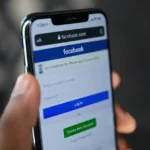Lipstick was once considered as a barometer of market demand, but analysts are suggesting that consumers are purchasing more beauty products this time around. Devised by former Estee Lauder chairman Leonard Lauder, the term “lipstick index” referred to women’s preferences for practical gratifications as compared to expensive luxury items in 2000. Consumer confidence was then associated with lipstick sales. Lipstick was cost-friendly for the majority of consumers as a result of regressing economic activities.
How the Lipstick Index Defined the Economy
This so-called “lipstick effect” is illustrated in China, according to the CEO of French cosmetic company L’Oreal. “It’s the famous ‘lipstick effect’ – sometimes when people spend less on expensive items like cars or buying apartments, they have more available income, and they like to indulge themselves with beautiful products.” L’Oreal CEO Jean-Paul Agon felt optimistic for the company.
By 2023, TechSci Research, a marketing firm, says that the market value of the lipstick industry could potentially be at 17 billion dollars. But as the economy is facing marketplace changes, the lipstick index may become less reliable. Euromonitor, a London-based research company analyzed that global lip products including lip gloss and liner are expected to take an 18 percent leap between 2019 and 2020.
According to marketing research company Mintel, lip products went down by about 3 percent during the great recession. Mintel also added that the market for beauty products could potentially rise by 3 percent in 2020. With a growing array of beauty products, lipstick is slowly losing its significance as a forerunner.
Mintel analyst Alison Gaither noted that the latest recession “helped to spur growth in the nail color and care category as women tightened spending and turned to more at-home nail care options, potentially in lieu of visiting the salon.” At that time, the demand for nail products increased by about 12 percent.
Lip and nail products only make up part of the vast varieties and types of color cosmetics including many cosmetic kits and makeup products. Euromonitor projects an equivalent of 11 million dollars in sales and an overall value of 76 million dollars in sales. Distinguishing lipstick sales as an indicator of consumer demand is hardly useful following the growth of beauty products, especially on specific categories such as skin care and color makeup products, according to Mintel.
Consumers may try a lower price product and then when they do have more income trade up to a brand in another.” Nonetheless, beauty product sales are doing well in the fluctuating economy. Gaither states that the drop in sales for lipstick can be compensated since consumers remain loyal to the beauty industry. “















